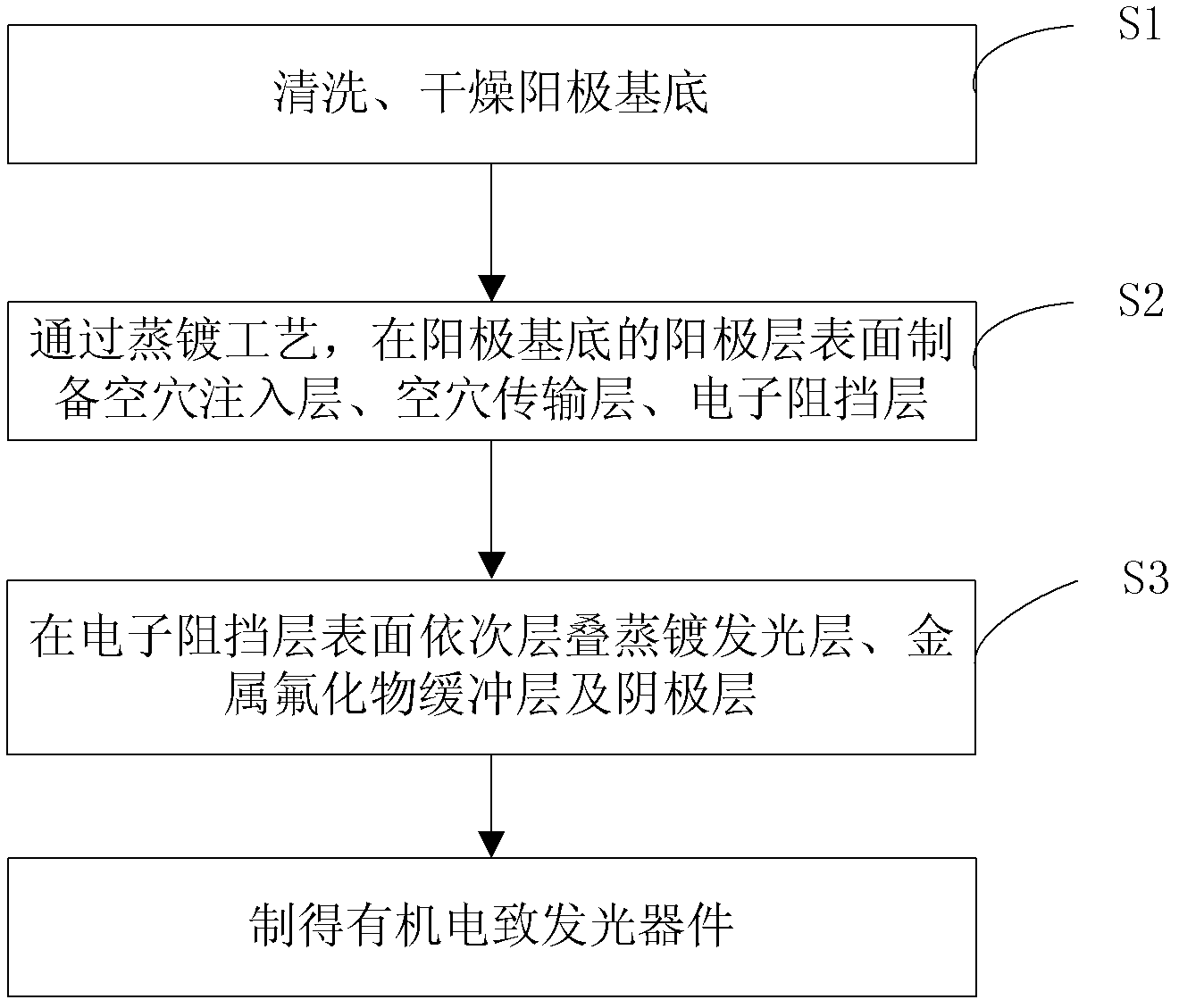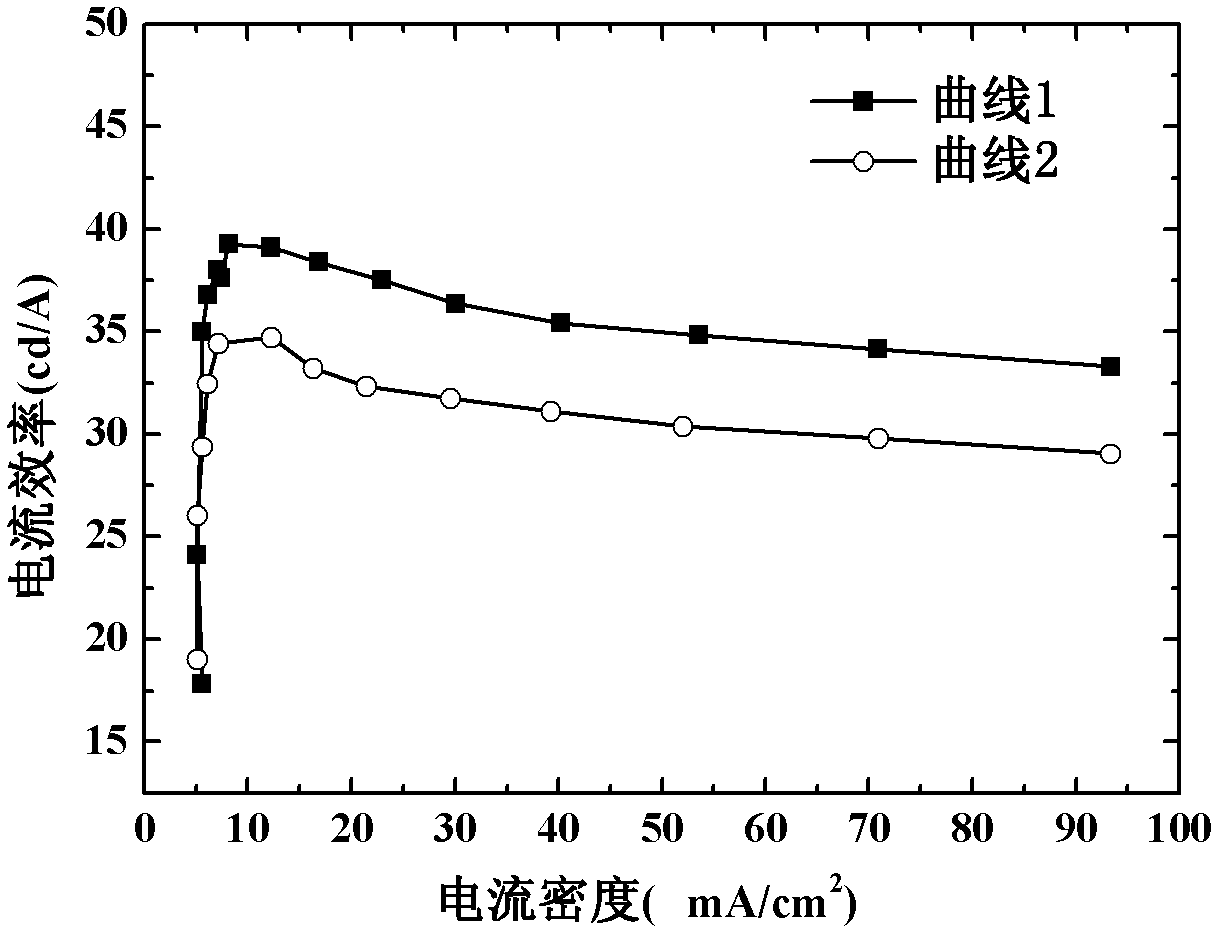Organic electroluminescence device and preparation method thereof
An electroluminescent device and electroluminescent technology, which are applied in the fields of electro-solid devices, chemical instruments and methods, semiconductor/solid-state device manufacturing, etc., can solve the problem of reducing the start-up voltage and current efficiency of organic electroluminescent devices, and destroying the organic functional layer structure. , the problem of low exciton recombination probability, etc., to achieve the effect of improving light extraction efficiency, improving transmission capacity, and reducing energy
- Summary
- Abstract
- Description
- Claims
- Application Information
AI Technical Summary
Problems solved by technology
Method used
Image
Examples
preparation example Construction
[0036] The preparation method of the above-mentioned organic electroluminescent device, such as figure 2 shown, including the following steps:
[0037] S1. Clean the anode substrate sequentially with detergent, deionized water, acetone, ethanol, and isopropanol for 15 minutes, remove organic pollutants on the surface of the anode substrate, dry the anode substrate, and set aside;
[0038] S2. Using an evaporation process, sequentially stacking an evaporation hole injection layer, a hole transport layer and an electron blocking layer on the anode layer of the anode base;
[0039] S3, using an evaporation process, and then sequentially stacking an evaporation-deposited light-emitting layer and a cathode layer on the surface of the electron blocking layer;
[0040] After the above process steps are completed, the organic electroluminescence device is obtained.
[0041] In the preparation method of the above-mentioned organic electroluminescent device, in order to obtain a bett...
Embodiment 1
[0046] The structure of the organic electroluminescence device of the present embodiment is: ITO / MoO 3 / NPB / TAPC / Alq 3 / MgF 2 / (Mg:Ag).
[0047] The preparation process of the organic electroluminescent device is as follows:
[0048] 1. First, ITO is ultrasonically cleaned with detergent, deionized water, acetone, ethanol, and isopropanol for 15 minutes to remove organic pollutants on the glass surface. After cleaning, perform oxygen plasma surface treatment on the anode layer of the ITO surface for 5 minutes , and the oxygen plasma treatment power is 50W;
[0049] 2. On the anode layer of the ITO surface treated with oxygen plasma, the functional layers such as the evaporated hole injection layer, the hole transport layer, the electron blocking layer, the light emitting layer, the buffer layer and the cathode layer are stacked sequentially. The materials of each functional layer are as follows: MoO 3 , NPB, TAPC, Alq 3 , MgF 2 , Mg:Ag (mass ratio of Mg:Ag=1:10); the th...
Embodiment 2
[0052] The structure of the organic electroluminescence device of the present embodiment is: ITO / MoO 3 / NPB / TAPC / Alq 3 / MgF 2 / (Mg:Ag).
[0053] The preparation process of the organic electroluminescent device is as follows:
[0054] 1. Clean the ITO with detergent, deionized water, acetone, ethanol, and isopropanol in sequence for 15 minutes to remove organic pollutants on the glass surface. After cleaning, perform oxygen plasma surface treatment on the anode layer of the ITO surface for 15 minutes. And the oxygen plasma treatment power is 10W;
[0055] 2. On the anode layer of the ITO surface treated with oxygen plasma, the functional layers such as the evaporated hole injection layer, the hole transport layer, the electron blocking layer, the light emitting layer, the buffer layer and the cathode layer are stacked sequentially. The materials of each functional layer are as follows: MoO 3 , NPB, TAPC, Alq 3 , MgF 2 , Mg:Ag (mass ratio of Mg:Ag=1:10); the thickness of ...
PUM
| Property | Measurement | Unit |
|---|---|---|
| luminance | aaaaa | aaaaa |
| luminous efficiency | aaaaa | aaaaa |
| thickness | aaaaa | aaaaa |
Abstract
Description
Claims
Application Information
 Login to View More
Login to View More - R&D
- Intellectual Property
- Life Sciences
- Materials
- Tech Scout
- Unparalleled Data Quality
- Higher Quality Content
- 60% Fewer Hallucinations
Browse by: Latest US Patents, China's latest patents, Technical Efficacy Thesaurus, Application Domain, Technology Topic, Popular Technical Reports.
© 2025 PatSnap. All rights reserved.Legal|Privacy policy|Modern Slavery Act Transparency Statement|Sitemap|About US| Contact US: help@patsnap.com



